
Guest blogged by Brooklynwala
A few days ago, a friend sent me this powerful open letter she wrote in order to spark critical thinking and dialogue on the pitfalls of calling the police and relying on the criminal (in)justice system to deal with issues in our neighborhoods and communities. We live in New York City, which has a police force widely known for its excessive use of force and violence, especially against people of color. Sundari recently did a post on the NYPD shooting and killing of a Sikh man in NYC, Satnam Singh, just last week.
In a context in which police by and large cause more harm than get us closer to justice and where the prison system dehumanizes people instead of rehabilitating them, the author of this piece, along with a growing movement around the U.S., are challenging us to think of alternative ways of responding to harm. She states,
“Many of us don’t believe in calling the police. Right now, right here, even before we’ve sufficiently built all the alternative structures for responding to harm. Both in an attempt to create the world we want to live in, and/but also because the impact of prisons and policing is brutal, oppressive, racist, traumatic. We see almost no good coming of it, certainly no transformation, no making things better. We don’t trust police, we don’t think of them as the “good guys,” and we don’t think calling them is going to change anything.”
My friend’s compelling piece “Feeling for the edge of your imagination” got me thinking about what a Sikh approach to justice is. While there is clearly not a simple answer to this question, I tend to think a Gurmukh would place love, forgiveness, rehabilitation, accountability, and recognizing the Divine in all at the center, despite questionable or even horrific actions one has perpetrated. Think about Bhai Kanhaiya Ji’s seva for “enemy” soldiers in need, who saw the injured soldiers’ humanity before he sought vengeance for their attacks against the Sikhs.
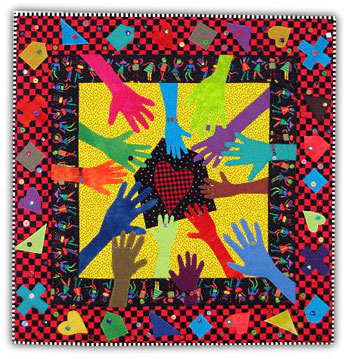 A few years back, I went to my first Charni Lagna ceremony. Charni Lagna – literally, “at the feet of the Guru” is the traditional name of the event where a Sikh formally begins reading from the Guru Granth Sahib.
A few years back, I went to my first Charni Lagna ceremony. Charni Lagna – literally, “at the feet of the Guru” is the traditional name of the event where a Sikh formally begins reading from the Guru Granth Sahib.
Like most Sikh ceremonies, it is actually quite simple. After shabad kirtan is recited, an ardaas is offered for the young (or old) Sikh who is beginning their journey with the Guru – then finally, he or she will read the hukamnama.
The ceremony I attended was for an 11-year old girl, who was very excited and worked hard to prepare for this day. After a few shabads were sung by the local jatha and the girl’s friends – one by one, members of the sangat came to say a few words of encouragement. One of her friends was around the same age and similarly went through this ceremony a year prior. She spoke about her own experience reading from the Guru Granth Sahib on a daily basis and how it has changed her life. Then one of her friends who had yet to take this step spoke of how she was inspired to do so soon. Then came her Punjabi school teacher, then her camp counselors, then other leaders of the community. I noted that neither her parents nor any of her relatives spoke – but instead, they just sat and listened to the members of the sangat, who individually shared such beautiful words of encouragement and praise for this young Kaur, who humbly sat at the feet of the Guru…It was quite powerful.
Finally, as the ardaas ended, there was a rare moment of pin-drop silence in the darbar hall. Then this brave 11 year old girl, surrounded by her proud parents and grandparents, read the hukamnama flawlessly…I was moved by the whole event.
Immediately after the hukmanama was completed, something remarkable happened…
By now, everyone should have heard of Glee – a musical comedy-drama television series focusing on a high-school glee club. A glee club is a musical group which traditionally specializes in the singing of short songs. Before writing this blog post, i didn’t quite know how big this phenomenon was… but apparently it’s big and there is a large following of gleeks and gleemania.
A young Sikh girl by the name of Raveena is hoping to audition and land a role on the show. There is a Facebook page dedicated to helping “Raveena get on the show”.
I am auditioning for this TV show called Glee, I trust that you have heard of it and I need your help. As a Sikh, its been really hard for me to land roles in a more professional environment because there are very few roles available for Indians. With the nationwide casting call for Glee, I can hopefully show everyone what I’ve got and get a call back for a show that is looking for people who don’t quite fit the mold.
Here on TLH, we love to highlight Sikhs who are pursuing their passions. Watch Raveena’s video and if you like it – take a few moments to rate/comment on her video so that she has a chance to audition for the show.
Sikhs will be celebrating Vaisakhi world wide next week on April 14th. Sikhs in Malayasia are requesting that Vaisakhi be made a national holiday.
Tan Sri Darshan Singh, the President of Malaysia National Sikhs Movement president, said, “The Sikhs who arrived earlier in this country served in the security forces and have contributed towards the economic development of Malaysia”. Karpal Singh of DAP believes that Vaisakhi should be given consideration as a national holiday because of its considerable significance to Sikhs. However, Malaysian Sikhs have not gotten a positive response from the government.
A common saying is a community knows when its contributions are being viewed as an important part of a “host” country’s fabric of life when the entire nation gets a day off on a day that is significant to that community. In a nutshell, it means you have really “made it”.
I look forward to the day that non-Sikhs will be taking Vaisakhi off in Malaysia and America. We have “made it” in these countries in many ways although we are often treated like “resident aliens”. I wish it wouldn’t take a national holiday to break that mold, but may be it would help?
 The Ravi Foundation recently released PunjabiKosh – the first full-featured, mobile Punjabi-English and English-Punjabi Dictionary. Designed for iPhones and iPods, this Punjabi dictionary is the first of its kind created for this platform. The app is currently priced at $6.99.
The Ravi Foundation recently released PunjabiKosh – the first full-featured, mobile Punjabi-English and English-Punjabi Dictionary. Designed for iPhones and iPods, this Punjabi dictionary is the first of its kind created for this platform. The app is currently priced at $6.99.
The app provides for a clean, intuitive and easy-to-use interface that’s both attractive and clean. Features include:
- 30,000+ Word Dictionary
- Includes Common Punjabi Phrases and Idioms
- Full Gurmukhi Unicode Native-Keyboard
- English & Punjabi Search Capabilities
- Reverse-Definition English Search
- Vowel Fuzzy-Search
- Gurmukhi & Shahmukhi Transliteration
- Part-of-Speech
100% of the profits made from the sales of the app will be donated to fund a project with The Association for the Welfare of the Handicapped. While the group is still attempting to fix some coding issues (the iPhone does not fully support the Gurmukhi unicode font) this application seems to be a great first step.
A true Sikh hero, Fauja Singh, turned 99 last Thursday.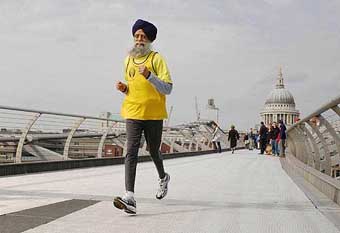
Turbaned Tornado, Fauja Singh turns 99 on Thursday. Here’s wishing this Punjabi icon who manages running marathons at an age not many reach, many happy returns of the day. Besides other gifts that he’d be receiving on his birthday on April 1, this real life ‘Forest Gump’ is all set to give himself a present — by setting yet another marathon record at the ripe age of 99. “I can only sleep, run or walk. I’ll die the day I sit down,” the young nonagenarian had told this scribe in an interview in 2005 on the streets of Ilford, Essex, UK, where he has been living along with his son Sukhjinder Singh since the 1980s. He shifted to UK after having lost his wife and younger son in quick succession in Punjab. [TOI]
Harvest of Grief, a new documentary directed by Anwar Jamal recently premiered in Punjab. The film aims to tackle the rising number of farmer suicides in Punjab.
Harvest of Grief is a 60 minute documentary of farmers’s suicides in the dry district of Sangrur. Suicides are due to indebtedness arising out of high costs of water, mechanized farming, chemical pesticides and fertilizers and low economic returns. The film also takes a comprehensive view of gender, health and environmental destruction which are the consequences of the Green Revolution and globalization. [link]
The movie is sponsored by the Rescue and Revival Mission and predominantly focuses on the impact the suicides have had on women and children. A recent article in the Financial Times also discussed Harvest of Grief and the issue of famer suicides in Punjab. Official statistics say that 132 farmers in Punjab killed themselves in the past five years – attributing the deaths to natural causes or alcohol or drug abuse. However, Inderjit Singh Jaijee, a Chandigarh-based human-rights activist and former state legislator, states that up to 40,000 farmers have taken their lives in the past 20 years. A large discrepancy in the number of farmer suicides exists (perhaps due to a lack of infrastructural support, social stigma etc.) and families are often left destitute, receiving little or no state support.
I look forward to watching the film and hope it creates productive dialogue leading to potential solutions for families impacted and affected by this issue.
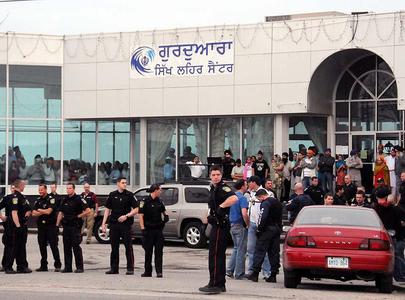 As many Sikhs throughout the world are gearing up to celebrate Vaisakhi, we continuously get disheartening news as well. In Toronto there was a shameful incident this weekend.
As many Sikhs throughout the world are gearing up to celebrate Vaisakhi, we continuously get disheartening news as well. In Toronto there was a shameful incident this weekend.
A former judge, now a prominent Brampton lawyer, is in hospital with serious stab wounds when a mob turned deadly at a Sikh temple on Friday evening.Manjit Mangat, 53, is in hospital with multiple stab wounds to his abdomen, thighs and legs and cuts on his face after he was attacked inside the Sikh Lehar Centre, a temple at Bramsteele Rd. near Steeles Ave. and Hwy. 410.[link]
The worst exhibit I saw ..and I know BOTH sides are guilty of this, was the declaration that the other side are not Sikhs. Both sides need to mature and grow up. I hope the Sikh youth can provide a better example for our elders.[link]
Wow. The use of graphics to display information about war costs is very powerful. Look at a few graphics below published on The Guardian’s blog about the cost and size of armed forces world-wide.
War Chests: Who has the biggest military budget per year?

Last week, many in US Sikhdom celebrated the triumphs of Captain Tejdeep Singh Rattan and Dr. Kamaljeet Singh Kalsi. For why you may ask? See previous coverage.
The NY Times Printed this short brief:
Capt. Tejdeep Singh Rattan, in a turban and full beard, graduated Monday at Fort Sam Houston in San Antonio, the first Sikh in a generation allowed to complete Army basic training without sacrificing the articles of his faith. The Army made an exemption to a uniform policy that has effectively prevented Sikhs from enlisting since 1984. “I’m feeling very humbled,” said Captain Rattan, 31, a dentist. “I’m a soldier.” He had to get a waiver from the Army to be allowed to serve without sacrificing the unshorn hair mandated by his faith. An immigrant from India who arrived in New York as a teenager, Captain Rattan said it was important for him to serve a country that has given him so many opportunities. Captain Rattan and Dr. Kamaljeet Singh Kalsi, who will attend basic training this summer, are the first Sikhs to receive exemptions in more than 25 years. [link]
Sikhs should absolutely have the opportunity to enter the military if they so choose; I will leave my opinion on the imperial adventurism in Iraq and Afghanistan for another time. Still from talking to other Sikh friends in the military, I wonder about Sikh Coalition’s press release stating “First Sikh US Army Officer Successfully Completes Basic Training” does some disservice to others in the military. That non-keshadhari Sikhs have served in the US army in the past is well known, especially the case of Uday Singh. Although the Coalition deserves kudos for their success for creating an opening for keshadhari Sikhs to also serve, does it also play up on a class factor by celebrating only officers, rather than the many nameless ground troopers?
 I read about this story and it just broke my heart. The details are tragic in and of themself, however, the indication that our community somehow failed this family is even more heartbreaking.
I read about this story and it just broke my heart. The details are tragic in and of themself, however, the indication that our community somehow failed this family is even more heartbreaking.
On February 21st, 2010 – Satnam Singh was shot to death by NYC police. A few days later his mother, Balbir Kaur, lay in a hospital bed recovering from being hit with a pan repeatedly by her son who suffered from a mental illness. When the NYC police arrived at the home – Satnam who had suffered an episode of an anxiety attack – was unable to articulate the situation. The police, seeing the mother bleeding on the couch – shot Satnam several times. He later died. Balbir Kaur’s other son, Lakhvinder Singh had in fact called the police. As he lay in a hospital bed preparing for treatment for a medical condition, he worried that he had not heard from his mother in some time. Their father, Bahadur Singh had recently traveled to Punjab and therefore, Balbir was alone at home with Satnam.
Balbir was the sole caretaker of her sons and husband. Satnam was suffering from a mental illness, Lakvinder was in a wheelchair after an accident, and Bahadur had his feet amputated due to gangrene infections. After the incident, Balbir lay in a hospital for days without a friend or family member by her side.
The local Punjabi language newspaper reports that since no one in the community knew the family, their suffering for years, including the latest episode, were unknown to anybody in Sikh circles. I somehow find it impossible to believe that the unfortunate family would never have visited any gurdwara the whole time they were there. Why did anybody not befriend them? Why was a support system not extended to them? Why was a newly migrant woman left to fend and care for her family of 3 disabled men on her own? [link]
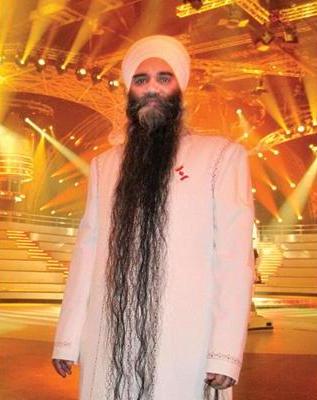 Bhai Sarvan Singh, the head granthi at Guru Nanak Sikh Temple in Vancouver has broken his own Guinness World Record of having the longest beard. His beard is now under 8 feet!
Bhai Sarvan Singh, the head granthi at Guru Nanak Sikh Temple in Vancouver has broken his own Guinness World Record of having the longest beard. His beard is now under 8 feet!
Initially Bhai Sahib was hesitant to take part in the competition because he did not grow his long beard for publicity. He grew it as part of his Sikh faith. However, he soon realized that the publicity actually helped encourage other Sikhs to keep this article of faith.
His translator Avtar Singh Gill said to the Vancouver Sun:
“So many other Sikhs have called him, saying, ‘You’re keeping that long hair and we are cutting our beards; we should not cut them,'” Gill said. “Some of them have promised that. Now he’s more comfortable than at the start.”
I also imagine this publicity is helping educate non-Sikhs about the Sikh faith.
Just over a year ago we read about a Canadian health organization’s apology for accidently shaving off a Sikh patient’s beard. In that case, a 70-year-old patient was admitted into the intensive care unit after a shooting and while under the care of the hospital, had his beard removed by a nurse. At the time of the incident, Fraser Health Authority acknowledged their mistake in not understanding the importance of the beard for the Sikh faith and assured the community that awareness was raised across the organization.
Fraser Health Authority is now apologizing again for a similar incident which occurred at one of their nursing homes, where an elderly Sikh man’s beard was cut.
B.C.’s Fraser Health Authority is investigating why staff at a seniors care facility made the “terribly unfortunate human error” of cutting the beard off an elderly Sikh patient, the second time such an incident has occurred in the past two years. A nurse cut the man’s beard out of what she thought was medical necessity. [link]
The “medical necessity” has not been disclosed. Fraser Health Authority’s CEO, Nigel Murray, appeared on a Punjabi radio station yesterday to apologize for the incident.
I recently heard about an interesting initiative happening in Southern California- a basketball camp for kids, put on by an all Sikh basketball team- the Singh Sensations. [Hat tip: Simrat]
On Saturday March 13, over 100 kids from Los Angeles, Orange County and San Diego gathered to participate in the first ever semi-annual Sikh basketball camp. The camp was held at Khalsa Care Foundation and next door at Pacoima Middle School. Registration began at 9 AM at Khalsa Care Foundation, and by 10 AM, over 100 participants ages 8-18 were stretching and preparing to run basketball drills in the Pacoima Middle School gym.
The camp offered athletic training- the kids ran drills- dribbling, passing, doing layups.
The camp was also part social training- members of the Singh Sensations discussed sportsmanship, teamwork, and how kids should behave on a court.
And finally, the camp was part mentoring on growing up as a Sikh- the Singh Sensations talked about how sports can be used as a metaphor for living as a Sikh. They shared problems had experienced when playing sports in high school and how they had worked through those problems.
Sports are a great way of getting kids together and engaged, and then weaving in topics – like dealing with bullying in the locker room, when growing up Sikh- that might be uncomfortable to talk about otherwise. Sounds like a great initiative!
 After following some of the recent on-line debates, and discussing the topic at our local Gurbani Veechar meeting, I’ve been reflecting a bit on the concept of amrit vela in Sikhi.
After following some of the recent on-line debates, and discussing the topic at our local Gurbani Veechar meeting, I’ve been reflecting a bit on the concept of amrit vela in Sikhi.
To summarize the debate, many feel that amrit vela is a specific time of day (roughly three hours before dawn) where one is most attuned to Waheguru. It is the time of day where there are few distractions and one’s mind can fully focus on reflection and remembrance of Waheguru. Then there are others who feel that spirituality and reflection cannot be tied to a time of day…any time is perfect for simran, and amrit vela is more of a “state of mind” rather than a specific time. Both sides interpret various lines from Gurbani to defend their case.
I am by no means an expert on the topic. My only extended period of time waking up at amrit vela was many years ago and only for a few weeks. I’ll admit, I really enjoyed waking up before the rest of the world and designating a block of time to sit and do my paath properly, with full concentration and no other distractions – unlike now, where I often multi-task as a I rattle through my paath. However, with my poor time management as a university student, waking up at amrit vela became tougher and tougher. And after a few scary moments at the wheel driving home late at night…I decided to defer this personal goal of mine until it better suited my schedule…unfortunately, that day has yet to come.
 In some countries, those that perpetrate ‘crimes against humanity’ are punished. In India, too often (depending on the political party), the perpetrators are awarded at the ballot boxes or are decorated with cabinet positions. This is the story of Kamal Nath.
In some countries, those that perpetrate ‘crimes against humanity’ are punished. In India, too often (depending on the political party), the perpetrators are awarded at the ballot boxes or are decorated with cabinet positions. This is the story of Kamal Nath.
Kamal Nath is India’s current Union Cabinet Minister of Road Transport and Highways. It was on many of those same roadways in Delhi that Kamal Nath in 1984 personally led thousands of paid goons in the government-sponsored pogroms against the Sikhs. Thousands were bloodily massacred; thousands were raped; many lives destroyed and devastated. Many eyewitnesses have testified that Kamal Nath lead groups to attack the Sikhs seeking shelter at Gurdwara Rakab Ganj (the historic site where the body of Guru Tegh Bahadur was cremated after his shaheedi), killing many Sikhs and destroying the grounds of the Gurdwara.
Ensaaf’s report provides detailed information on Kamal Nath’s leadership and involvement during those dark nights in Delhi. The Sikh Activist Network in Canada (one of the spearhead groups in the coalition) has also prepared a short report, highlighting specific sections written by lead human rights attorney for the Delhi widows – HS Phoolka – in regards to the role of Kamal Nath.
Now, this month he has been invited to Toronto to lecture. As Sikhs, as Canadians, as people of conscious, as humans – we must act now.
Earlier this month a congressional hearing reviewing the Transportation Security Administration’s 2011 Fiscal budget occurred in committee. Representative, John Culberson (Republican from Texas) demanded to know why the US government refuses to engage in racial and religious profiling, when screening at airports.
The Representative stated:
It is disturbing [the TSA policy against profiling]. I mean it is something that needs to change. It just defies common sense.
SALDEF responded by issuing a letter a to the Congressman reminding him it is against the US Constitution to profile based on religion. In a rising climate of gross Muslimophobia, Sikhs are ‘racialized Muslims’. We must stand in solidarity against such practices. I am glad that Sikh groups are paying attention.
Due to unforseen circumstances, we were notified that the webinar has been postponed until Saturday, March 27, 2010. Register at the link provided below.
—————–
A few months ago, RP Singh wrote a wonderful review of a new children’s book called A Lion’s Mane by Navjot Kaur. The book takes young readers on a journey to cultures around the globe to explore the meaning of the dastaar. The book does an excellent job at celebrating diversity and encouraging inquisition in young readers. While the main character in the book is a young Sikh boy, the author and illustrator worked hard to create a story that was accessible to both young boys and young girls.
Educators are now asking – how can we create gender neutral curriculum and cultivate an environment of bias-free learning? In a webinar titled, “Gender Neutral Teaching: A Sikh Context,” the Sikh Research Institute will be opening this topic up for discussion and looking at gender neutral teaching from a Sikh context. We have an important role as a community to help to facilitate these discussions and ensure that our children and their children have the opportunity to learn in an environment that celebrates diversity. Below you will find information on how to register for this webinar. It sounds like an enlightening and much needed conversation!
Gender Neutral Teaching: A Sikh Context
Presenter: Jasmine Kaur, Director of Education at the Sikh Research Institute
Register here.
Guest blogged by Harbakhsh Grewal
At the start of this year BBC 1, Britain’s premiere tv channel, highlighted the importance of 1984 to the Sikh psyche with a film documenting the personal journey of a British Sikh woman, journalist Sonia Deol. The reaction from many Sikhs has been hostile and vocal. Did the programme insult the faith, demonise its leaders and miss a massive opportunity to set the record straight as some have claimed? And even if it did, does the presenter deserve the vitriolic response resulting in her deleting her facebook page to avoid any more abuse?
Whatever the rights and wrongs of the programme, the response to it shows the level of concern still in the community to the tragic and horrific events of 1984. However some of the criticism has been purely personal and deeply unpleasant and does nothing to redress the balance or aid the causes that those who are angry care about.
To discuss the programme in any detail requires much deliberation. And that in a sense is why the programme should be applauded: the issues covered were of such enormity and complexity the programme makers should be congratulated for daring to cover them at all in the first place – and to try and do so within an hour slot is a task of great difficulty.
And the fact that many younger Sikhs, as well as the wider non-Sikh public more generally, have discovered a whole chapter of their own community’s history in some depth and breadth I think shows that the BBC has provided a much needed service.
Those who criticise on specific issues such as the portrayal of Bhindranwale have their own points to make. But they seem at times illogical.
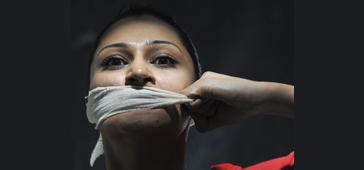 Many of you will recall the protests which emerged in 2004 when Gurpreet Kaur Bhatti went to stage her second play, Behzti. The play, which covered issues such as rape and violence within the setting of a gurdwara, caused an uproar in the Sikh community in Birmingham and was later canceled. Many community members welcomed the decision to cancel the play, while others argued that limiting the playwright’s free speech was actually detrimental to the Sikh community. It was nicely put in a Guardian article stating that, “The dispute became a classic conflict between the artist’s right to freedom of expression and a community’s wish to have their faith treated with dignity.”
Many of you will recall the protests which emerged in 2004 when Gurpreet Kaur Bhatti went to stage her second play, Behzti. The play, which covered issues such as rape and violence within the setting of a gurdwara, caused an uproar in the Sikh community in Birmingham and was later canceled. Many community members welcomed the decision to cancel the play, while others argued that limiting the playwright’s free speech was actually detrimental to the Sikh community. It was nicely put in a Guardian article stating that, “The dispute became a classic conflict between the artist’s right to freedom of expression and a community’s wish to have their faith treated with dignity.”
The Rep had taken the unusual step of inviting Sikh community leaders to a private preview to air their concerns, after which they agreed not to oppose the play if the setting was moved to a community centre. Bhatti refused. “I wanted to write a play about religious hypocrisy,” she explains, “for which the setting in a gurdwara was non-negotiable. The attempt to establish a dialogue with the Sikh community was well intentioned, but ultimately misinterpreted as an invitation to rewrite my play.” [link]
Gurpreet Kaur Bhatti later found a card among her Christmas mail that read: “Seasons Greetings. This will be your last Christmas. You are a disgrace to the race. Sending you lots of hate.” Bhatti was forced to go into hiding. Behzti sparked protests and death threats, and now the playwright is attempting to address the controversy in her new play, Behud – which translates colloquially as “beyond belief”.
